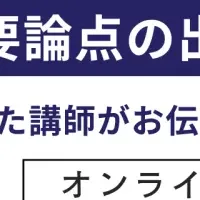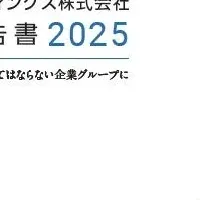
Surge in Global Semiconductor Equipment Sales Signals Industry Growth in 2024
In a remarkable turnaround, sales of semiconductor manufacturing equipment experienced a significant boost in 2024, amounting to $117.1 billion, according to a recent report by SEMI. This figure represents a 10% increase from $106.3 billion in the previous year, indicating a robust recovery in the semiconductor market.
The growth in revenue is attributed to heightened investments aimed at expanding capacity across several segments, particularly in leading-edge technologies and mature logic applications. Specifically, sales in wafer processing equipment saw a notable rise of 9%, complemented by a 5% increase in other front-end equipment sectors. A key driver of this expansion was an influx of investments from China, which continued to solidify its position as the largest market for semiconductor equipment globally.
Ajit Manocha, the President and CEO of SEMI, stated, "The global semiconductor equipment market surged by 10% in 2024, rebounding from a slight dip in 2023 to reach an all-time high of $117 billion in annual sales." This optimism stems from regional investment trends that reflect the changing dynamics of the semiconductor landscape, particularly the growing demand for chips related to artificial intelligence (AI) applications and high-bandwidth memory (HBM).
China led the charge with a staggering 35% year-over-year increase in semiconductor equipment investments, totaling $49.6 billion. This growth is largely driven by government initiatives aimed at bolstering domestic chip production and meet the increasing global demand. Korea followed suit with a modest increase of 3%, reaching $20.5 billion, as the demand within the memory market stabilized. In contrast, Taiwan experienced a decline in equipment sales, dropping by 16% to $16.6 billion, reflective of a slowdown in the demand for new manufacturing capacity.
Regionally, North America also showed resilience, recording a 14% rise in equipment investments, amounting to $13.7 billion. This increase can be attributed to a growing focus on domestic manufacturing and the adoption of advanced technology nodes.
While many regions thrived, Europe faced challenges with a notable 25% decline in spending, which fell to $4.9 billion. The downturn in Europe was primarily driven by weakened demand from the automotive and industrial sectors amid ongoing economic uncertainty. Meanwhile, Japan saw a marginal dip of 1%, with equipment sales settling at $7.8 billion due to slower growth in its key end markets.
The overall increase in semiconductor equipment sales signifies a pivotal moment for the industry as it navigates the complexities of modern technology demands. The boosters of growth are indicative of a sector realigning itself amidst heightened global competition and a strong push towards innovation.
As the industry continues to evolve, the insights from SEMI’s Worldwide Semiconductor Equipment Market Statistics (WWSEMS) highlight the critical nature of ongoing investments and advancements in semiconductor technology. With predictions for continuous growth, the future looks bright for the semiconductor sector, inviting further scrutiny on how these developments will shape competitive strategies in forthcoming years.
For industry stakeholders, these statistics underscore the importance of agility in adapting to market dynamics and investing in the latest technologies to maintain a competitive edge in a rapidly changing landscape. Amid increasing geopolitical tensions and fluctuating market demands, the semiconductor equipment industry stands as a beacon of resilience and progress, navigating through challenges while pushing the boundaries of technology.
The growth in revenue is attributed to heightened investments aimed at expanding capacity across several segments, particularly in leading-edge technologies and mature logic applications. Specifically, sales in wafer processing equipment saw a notable rise of 9%, complemented by a 5% increase in other front-end equipment sectors. A key driver of this expansion was an influx of investments from China, which continued to solidify its position as the largest market for semiconductor equipment globally.
Ajit Manocha, the President and CEO of SEMI, stated, "The global semiconductor equipment market surged by 10% in 2024, rebounding from a slight dip in 2023 to reach an all-time high of $117 billion in annual sales." This optimism stems from regional investment trends that reflect the changing dynamics of the semiconductor landscape, particularly the growing demand for chips related to artificial intelligence (AI) applications and high-bandwidth memory (HBM).
China led the charge with a staggering 35% year-over-year increase in semiconductor equipment investments, totaling $49.6 billion. This growth is largely driven by government initiatives aimed at bolstering domestic chip production and meet the increasing global demand. Korea followed suit with a modest increase of 3%, reaching $20.5 billion, as the demand within the memory market stabilized. In contrast, Taiwan experienced a decline in equipment sales, dropping by 16% to $16.6 billion, reflective of a slowdown in the demand for new manufacturing capacity.
Regionally, North America also showed resilience, recording a 14% rise in equipment investments, amounting to $13.7 billion. This increase can be attributed to a growing focus on domestic manufacturing and the adoption of advanced technology nodes.
While many regions thrived, Europe faced challenges with a notable 25% decline in spending, which fell to $4.9 billion. The downturn in Europe was primarily driven by weakened demand from the automotive and industrial sectors amid ongoing economic uncertainty. Meanwhile, Japan saw a marginal dip of 1%, with equipment sales settling at $7.8 billion due to slower growth in its key end markets.
The overall increase in semiconductor equipment sales signifies a pivotal moment for the industry as it navigates the complexities of modern technology demands. The boosters of growth are indicative of a sector realigning itself amidst heightened global competition and a strong push towards innovation.
As the industry continues to evolve, the insights from SEMI’s Worldwide Semiconductor Equipment Market Statistics (WWSEMS) highlight the critical nature of ongoing investments and advancements in semiconductor technology. With predictions for continuous growth, the future looks bright for the semiconductor sector, inviting further scrutiny on how these developments will shape competitive strategies in forthcoming years.
For industry stakeholders, these statistics underscore the importance of agility in adapting to market dynamics and investing in the latest technologies to maintain a competitive edge in a rapidly changing landscape. Amid increasing geopolitical tensions and fluctuating market demands, the semiconductor equipment industry stands as a beacon of resilience and progress, navigating through challenges while pushing the boundaries of technology.
Topics Business Technology)










【About Using Articles】
You can freely use the title and article content by linking to the page where the article is posted.
※ Images cannot be used.
【About Links】
Links are free to use.